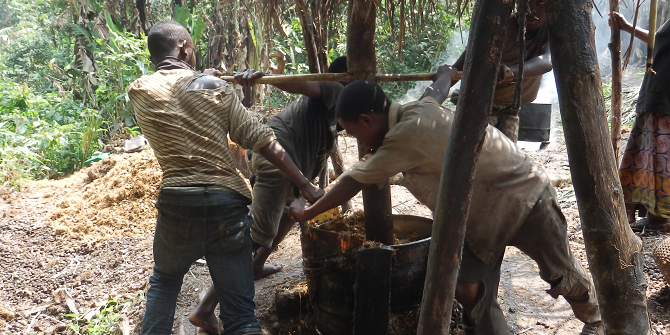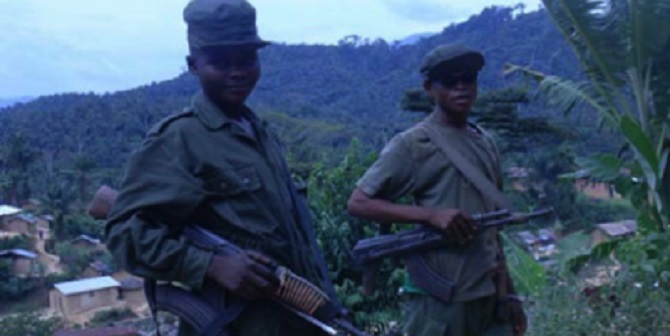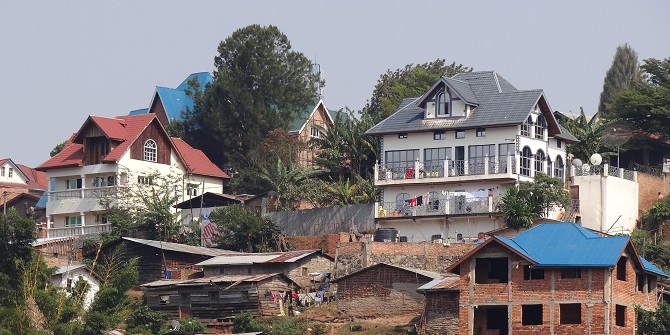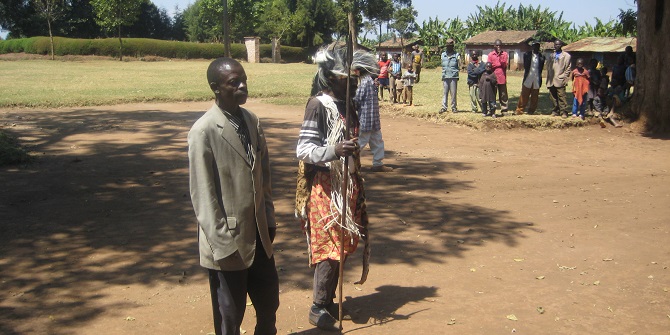
Recent scholarship has provided important evidence that we need to move ‘beyond minerals’. But in the rush to distance recent scholarship with earlier work on Congo’s single mineral story, we have stepped a bit too far as we still have much to learn about how different natural resources and violence are linked in the Congo. This blog calls attention to new site(ings) of exploitation, and it is these sites of exploitation that disrupt Congo’s most important economy – the farming economy.
This brief exposition highlights the critical role that plant resources and the search for and acquisition of plant resources, notably foodstuffs, play in Congo’s landscape of insecurity1. Food serves as not only a necessary (and obvious) resource that armed groups require, but the acquisition of food resources occupies a significant portion of armed group’s time, budget, human resources and shapes, in part, their interactions with the local community, as well as logistical decisions regarding group movement and operational activities. Access to food resources has also been used as a bargaining tool between armed groups and government officials seeking an end to the conflict. During the negotiation process between the Kinshasa Government and the Front for Patriotic Resistance in Ituri (FRPI) in 2014 for example, the provision of food was offered as an additional incentive to lay down their arms. That food is often reported alongside and as a critical exchange component for the materials directly used to fuel the violence in the region, namely ammunition and supplies, its absence from most scholarly interrogations is striking.
Dating from 2001 to the present day, the Group of Experts reports note, for example, how different armed groups acquired food through multiple strategies including through direct purchase, the delivery of goods from the nearby market towns, the maintenance of fruit and vegetable gardens near rebel camps and looted food from local communities. Food items are often delivered through formal channels alongside other essential supplies such as weapons, communication, and medical/personal supplies. The acquisition of food resources by armed groups similarly relies upon the local population as much for their labour as their harvests. For example, the Allied Democratic Forces (ADF) used forced child labour for the collection of wood and food and the cultivation of ADF-controlled fields, as well as the forceful practice of using abducted civilians to carry looted food and other supplies. The Democratic Forces for the Liberation of Rwanda (FDLR) similarly relied on civilian labour who were forced to work one day a week on FDLR controlled fields for free. Food crops grown under these systems were not simply used for local consumption but were also sold for cash. FDLR, whose main plant cultivars include cassava, corn, beans, and marijuana, sold truckloads of foodstuffs each harvest. Thus, selling agricultural products served as an alternative revenue source generated through “non-conventional logistics”, alongside income from taxing vehicles and the collection and sale of wood. Unlike the diamond, coltan, or tin markets, which have no domestic market or use, food resources blur the lines between sustenance and profit whereby the same jerry cans of palm oil may serve armed groups either as a necessary cooking additive or may be sold for profit in the regional marketplace.
Among the plural sites of appropriation, food collections serve as one of the principal means by which the military and many armed groups extort civilian wealth. The routine or regular collection of food resources remains a ubiquitous experience for many communities proximate to armed groups. Many armed groups require the civilian populations living in areas under the armed group’s control to pay a monthly, or weekly, household tax consisting of either a payment or an in-kind donation of food. A similar taxation scheme has been imposed on market vendors as well as individual market sellers ranging from demands for cuts of meat from butchers to a contribution of a seller’s produce. Also observed in South Kivu, some rebel groups have displaced civilian vendors to control individual markets stalls themselves, including the preparation of and the sale of the popular fried doughnuts, known locally as beignets.
Plant resources serve not only as a valuable (re)source for sustenance during times of war, but they serve a much broader range of conflict actors and in equally diverse ways. For example, the Mai-Mai rebel group, often described as a community defense group, infamously rely on a secret blend of medicinal herbs to render them impervious to bullets. One plant in particular, cannabis sativa, and notably, its phyto-pharmaceutical benefits, serves both for armed groups and local community members as a source of income, a medicinal herb to treat a range of ailments within human as well as livestock bodies, and even more so for fighters as a way to ameliorate, and perhaps perform the varied psychological and emotional challenges that confront individual fighters.
Plants are thus seen as a highly valuable resource in multiple ways by different conflict actors and their use is equally dynamic and responsive to the broader socio-political environment of Congo’s warscape. Taken together, by evacuating the literal roots of Congo’s insecurity, this framing serves to upend heteronormative and dominant understandings of Congo’s violence largely portrayed as a struggle centered on masculinised spaces (mines and battlefields) and over market valued commodities (precious stones and strategic minerals) and for-profit relations (greed).
1 For purposes of this blog, examples here speak to rebel engagements with plant resources. The impact of these extractions with/of plant resources on civilian lives and livelihoods is beyond the scope of this write-up.
Note: The CRP blogs gives the views of the author, not the position of the Conflict Research Programme, the London School of Economics and Political Science, or the UK Government.





